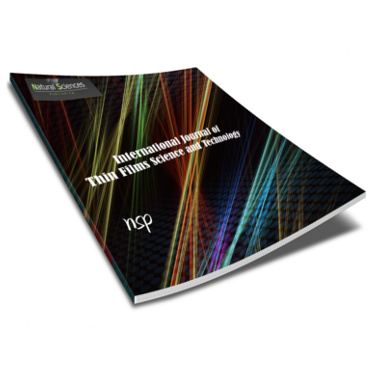International Journal of Thin Film Science and Technology

Abstract
AgNWs were produced by the one-pot polyol method, and it had been produced by reduction of AgNO3 by ethylene glycol in presence of polyvinylpyrrolidone (PVP) and KCl at high temperature of about 160 oC. AgNWs suspension were purified by centrifuging at 3000 rpm for three times then re-depressed in deionized water with a concentration of 1%. The purified suspension was diluted to different concentrations (2-5) mg. mL-1 using 1% of hydroxy methylcellulose to design different AgNWs transparent conductive films (AgNWs-TCFs). AgNWs suspension inks were coated on the glass and polyethylene terephthalate (PET) substrates. Different AgNWs diameters were obtained by changing the synthesis conditions. It has been observed that the wire diameter will greatly affect both the optical and electrical properties of the obtained AgNWs-TCFs. The best obtained AgNWs-TCFs had high transparency of about 91.5 %, small sheet resistance of about 14 .03 Ω and optical haze less than 2%, which met the requirements for the manufacture of optoelectronic and sensor equipment. Keywords: Silver nanowires, transparent conductive electrode, flexible electrodes, polyol method, AgNWs size control, AgNWs size-dependent and one-pot synthesis.
Recommended Citation
D. Abdel-Rahim, Rabeea; M. Nagiub, Adham; and A. Taher, Mahmoud
(2022)
"Electrical and Optical Properties of Flexible Transparent Silver Nanowires electrodes,"
International Journal of Thin Film Science and Technology: Vol. 11
:
Iss.
1
, PP -.
Available at:
https://digitalcommons.aaru.edu.jo/ijtfst/vol11/iss1/16

